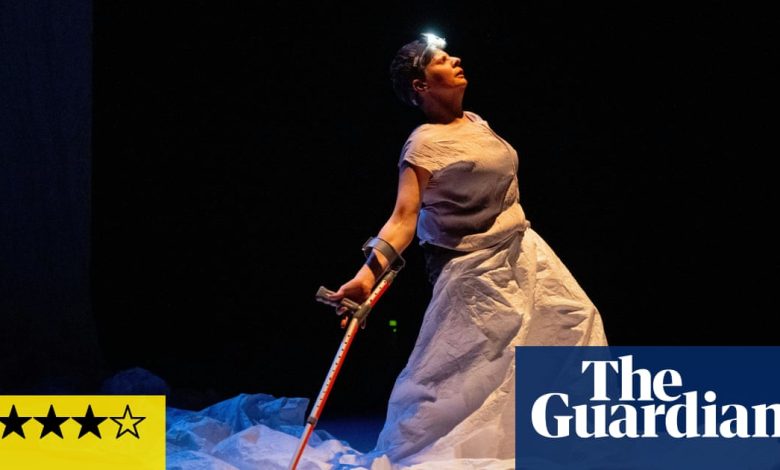Songs of the Wayfarer review – a likeable hike through life and theatre | Dance

A a dance performance in which two mountaineering consultants are credited – this is already intriguing. Claire Cunningham is dressed in hiking gear: rucksack, flask, clear map pouch around neck. Her journey takes her only around the small theater, counting steps, climbing the seats in the auditorium, finding shelter in a mountain of peaks made of braided crutches, but her wandering becomes a meditation on finding our way on life’s unexpected paths.
It’s a solo show, but Cunningham isn’t alone on stage. Her BSL interpreter is there, and audience members are invited to lounge on sackcloths (all are relaxed performances, with accommodations for different needs). We shouldn’t worry if our bodies – or our sacks – make noise, it’s all part of the landscape, she tells us in a sort of pre-expedition briefing. A person who uses crutches — as Cunningham does — uses twice as much energy as someone who doesn’t, she says, so there can be interruptions. And when they come, she asks if we should stretch, drink something, bringing us back to our own bodies. The Scottish artist has an open, easy way of connecting and reminds us that we are on this journey together.
There are layers of subtle but clever ideas. In this map bag, for example, is not a topography, but a score: Mahler’s Songs of a Traveler. Before becoming a leading figure in disability arts and dance, Cunningham was a classical singer, and she sings lines from the song cycle (against a more ambient backdrop by Matthias Herrmann), her voice both strong and vulnerable. Tempo markings from the score are projected onto the floor, transformed into guidelines for living: “No rush”, “Very loud”, “Quiet, until the end”.
Cunningham adds his own pleasant, rhythmic lyrics as he places his crutches on the floor, a “four-legged creature” that shifts its balance, navigating sometimes inhospitable terrain. The movement parts aren’t as impactful as her singing and speaking – where she reveals fragments of memories, of life and loss – but they’re somehow essential to the sense of wandering and reverie; just putting one foot or one crutch in front of the other, over and over again, as we all must do. It’s a quiet but impactful piece.


